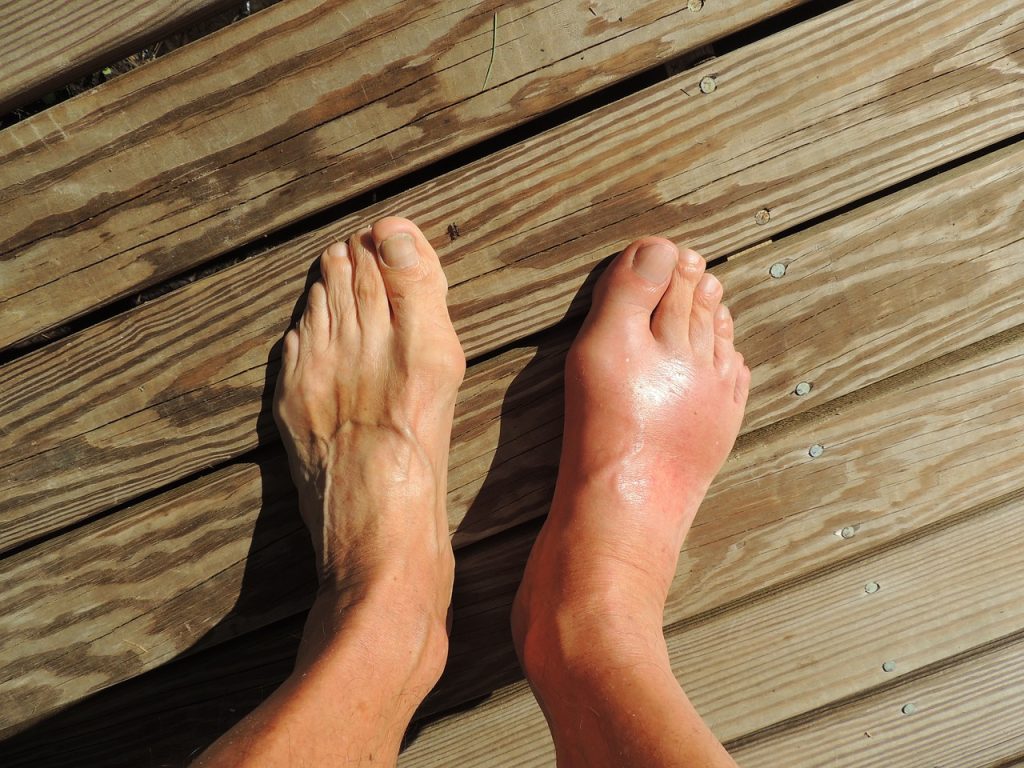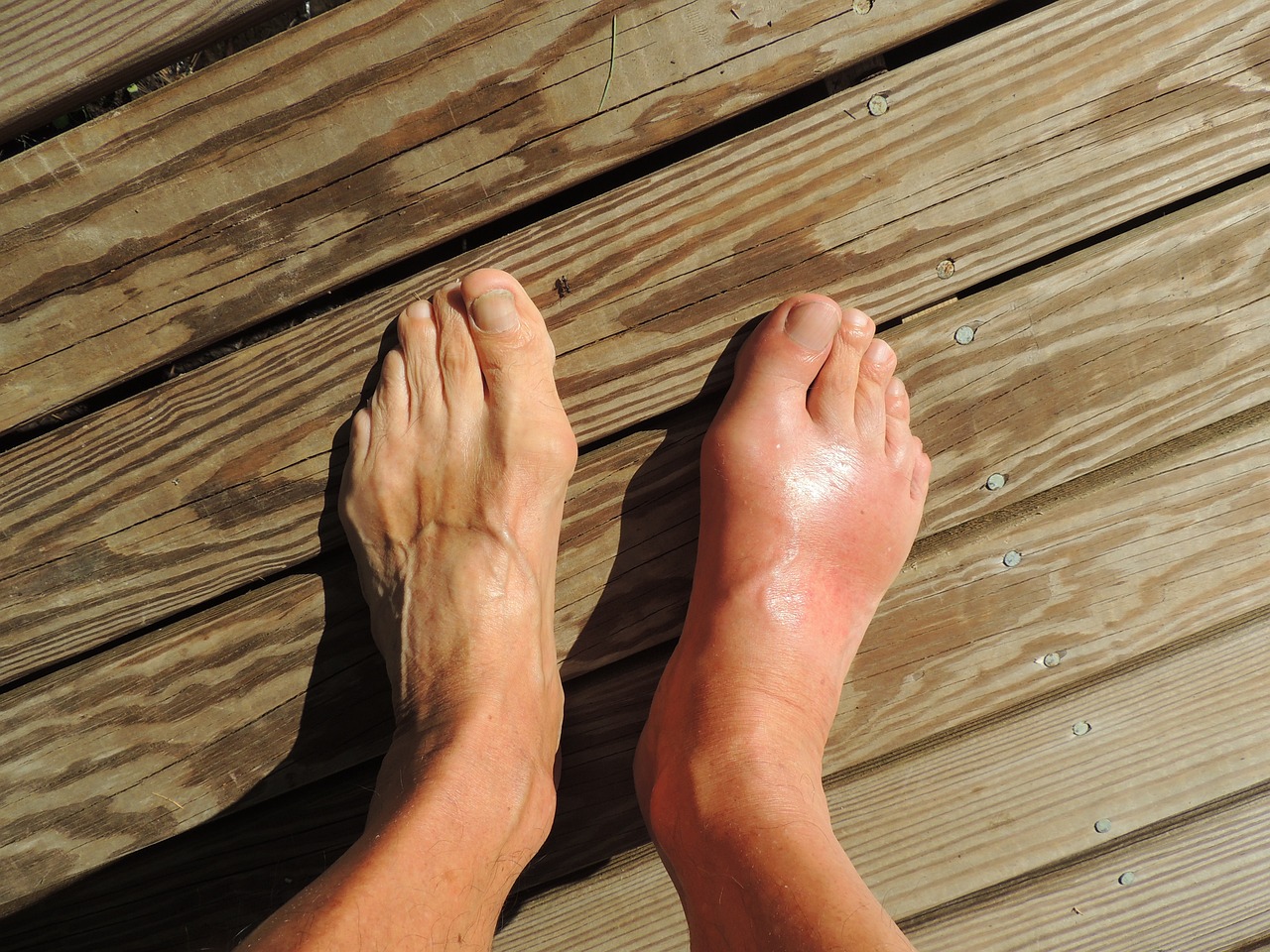Fitness Tips and Strategies to Prevent Gout Flare-Ups
Gout, the disease of kings, is quickly becoming a global epidemic. You’re probably wondering why we called it the “disease of kings.” Well, the reason is pretty simple. Gout is (or was) called the “disease of kings” because it was a result of the overindulgence of food (like red meat) and alcohol in medieval times. Due to the cost of such a diet, the condition was associated with nobility. Hence the nickname “the disease of kings.”
Gout is one of the oldest joint diseases known to man, as far back as 2640 B.C. However, gout remains the most common form of inflammatory arthritis that haunts mankind in the 21st century. Although certain foods worsen this condition, scientists have found that gout occurs due to very high concentrations or build-up of uric acid in the blood.
In this article, we will shed more light on what gout is and explore useful fitness tips and strategies to help you prevent gout flare-ups. From choosing the right exercises to incorporating healthy habits into your daily routine, these tips can help you manage your condition and lead a more comfortable life.
Let’s get started on the path to better health and fewer gout attacks!
What is Gout?
Gout is a painful inflammatory arthritis caused by excessive build-up of uric acid in the body/blood. Uric acid is a natural substance in the body. It is an end-product of human purine metabolism and is excreted by the kidneys in urine. However, if it becomes too much, the uric acid circulating in the blood will form crystals that gather or deposit in the joints, leading to swelling, redness, and pain in the joints, tendons, and surrounding tissues.

Therefore, gout occurs when there’s an overproduction of uric acid in the body or when the kidney removes too little uric acid from the body. Both ultimately lead to an excessive build-up of uric acid in the body.
This condition causes painful swelling in the joints, most commonly affecting the big toe joint. However, you can have gout in the ankle, knees, feet, elbows, hands, and wrists. Gout is a chronic condition with symptoms that come and go (recur) in episodes known as gout attacks or flares. The symptoms tend to worsen during these episodes.
If left untreated, gout can cause permanent joint damage, joint deformity, and chronic pain. This can lead to immobility or a sedentary lifestyle, which will lead to muscle weakness and stiffness of the joints.
Tips and Strategies to Prevent Gout Flare-Ups
Whether you have gout and simply want to prevent future flares or you are at risk of having gout, making certain lifestyle changes will help. Prevention and management of flares is a possible endeavor.
Here are several tips and strategies to help you prevent gout flare-ups. By following these tips, you can manage your condition better and reduce the chances of experiencing painful attacks.
- Stay Hydrated Always
Staying hydrated (by drinking more water) is one of the simplest and most effective ways to prevent gout flare-ups and reduce symptoms. The ability for uric acid excretion is proportional to urine flow. Increasing water (or other fluid) consumption helps flush uric acid out of your body. It forces the kidneys to release excess fluid, reducing uric acid concentration and the risk of crystal formation in your joints.
Water is the best and easiest way to stay hydrated. A study found that adequate water consumption in the 24 hours before a gout flare significantly decreased recurrent gout attacks. However, other fluids like herbal tea can suffice. Nevertheless, soda, alcohol, and fluids high in purines must be avoided. Aim to drink at least eight glasses of water daily to stay well-hydrated. If you have kidney disease or congestive heart failure, consult with your doctor before increasing your fluid consumption.
- Choose Low-Impact Exercises
Exercising decreases uric acid levels in the blood, reducing the risk of gout or gout flare-ups. When the body doesn’t move often, the joints become stiff and less flexible. A study found that physically active males had a lower risk of gout than sedentary males. However, the pain from gout attacks makes it difficult to move around. Fortunately, exercise modalities can help restore mobility after a gout flare-up.
High-impact or strenuous muscle exercises can put too much pressure on your joints and increase uric acid levels, potentially triggering a gout attack. Whereas moderate or low-impact exercises do not have such an effect. Moderate-intensity physical activity reduces uric acid concentration in obese individuals. Therefore, opt for low-impact exercises like swimming, cycling, or walking. These activities are gentle on your joints while still helping you stay fit and active.
- Maintain a Healthy Weight
Carrying extra weight increases the stress on your joints and raises your uric acid levels. In summary, weight gain is a strong risk factor for gout attacks. The good news is that it is possible to lower uric acid levels and the risk of gout by reducing body weight. This can be achieved through dietary modifications and regular exercise. When you shed excess weight, it corrects both the body’s underexcretion and overproduction of uric acid.
Keeping a healthy weight through a balanced diet and exercise can lower your risk of gout flare-ups. Even losing a small amount of weight can make a big difference.
- Eat a Balanced Diet: It Does Wonders!
What you eat plays a big role in managing and preventing gout. After all, people with gout (or hyperuricemia) typically have a poor diet. The trick is to have a balanced diet. By balanced diet, we mean a combination of nutrient-dense and minimally processed foods. These foods will help reduce uric acid levels and the risk of gout flares.
Avoid foods high in purines, such as red meat, shellfish, and sugary drinks, as they can increase uric acid levels. However, not all purine-containing foods increase uric acid levels and gout risk. Plant-based foods like beans and nuts are okay to eat, while animal-based foods like red meat and shellfish are not recommended.
Nevertheless, focus on a diet rich in fruits and vegetables. They contain high amounts of antioxidants, which can reduce inflammation. People with gout can also have a diet of low-fat, whole grains, low-carb, and lean proteins. Foods like cherries, which have been shown to reduce uric acid levels, can be especially beneficial.
- Avoid Alcohol
Alcohol, especially beer (which is high in purines), can raise uric acid levels and trigger gout attacks. Unfortunately, there’s no way around this. Alcohol intake triggers gout attacks, regardless of the type of alcohol. So, try to limit your alcohol intake of all types of alcohol or avoid it altogether. If you choose to drink, opt for wine (as it contains antioxidants and phytoestrogen) instead of beer and do so in moderation.
Conclusion
Living with gout flares can be a painful and exhausting ordeal. Plus, the inflammation that comes with it is just too much to deal with. Fortunately, you take back control by employing the fitness tips and strategies outlined in this article.
It’s not too late to make these healthy lifestyle choices. By following the tips mentioned in this article, you can prevent gout flare-ups and live a more comfortable life. Remember, small changes in your daily routine can make a big difference in managing and preventing gout flares.
Frequently Asked Questions
How can I fix gout permanently?
Gout cannot be cured, but it can be managed to prevent flare-ups. Some treatments can help slow down the progression of gout and reduce the frequency and severity of flare-ups or attacks. Making lifestyle changes and fitness strategies, such as eating a healthy diet, maintaining a healthy weight, and drinking plenty of water, can keep gout under control.
Are eggs bad for gout?
No, eggs are not bad for gout. In fact, they are low in purines and may lower uric acid levels in the blood. Plus, they are a good source of protein. So, people with gout can include eggs in their diet without worrying about a gout flare-up.
Can you squeeze gout out?
No, you cannot squeeze gout out. The inflammation caused by gout is quite tempting to squeeze. Moreover, gout cannot be excised without affecting the surrounding tissue. There’s simply no way to break up gout crystals physically, and trying to squeeze or massage the affected area will make the pain worse. The only way to manage gout symptoms is to reduce uric acid levels in the blood.
Victor Alex is a seasoned freelance writer with a passion for health and wellness, fortunate enough to turn his interests into a fulfilling career. With a keen eye for the latest developments in overall wellness, he crafts engaging content that resonates with his audience. When he’s not writing, Victor can be found exploring the latest trends in fitness and nutrition.
References
- Kakutani-Hatayama, M., Kadoya, M., Okazaki, H., Kurajoh, M., Shoji, T., Koyama, H., Tsutsumi, Z., Moriwaki, Y., Namba, M., & Yamamoto, T. (2017). Nonpharmacological Management of Gout and Hyperuricemia: Hints for Better Lifestyle.
- TotallyDuh. (2024). Symptoms and treatments for gout in ankle.
- Cleveland Clinic. (2023). Gout: Symptoms, Treatment & Prevention

